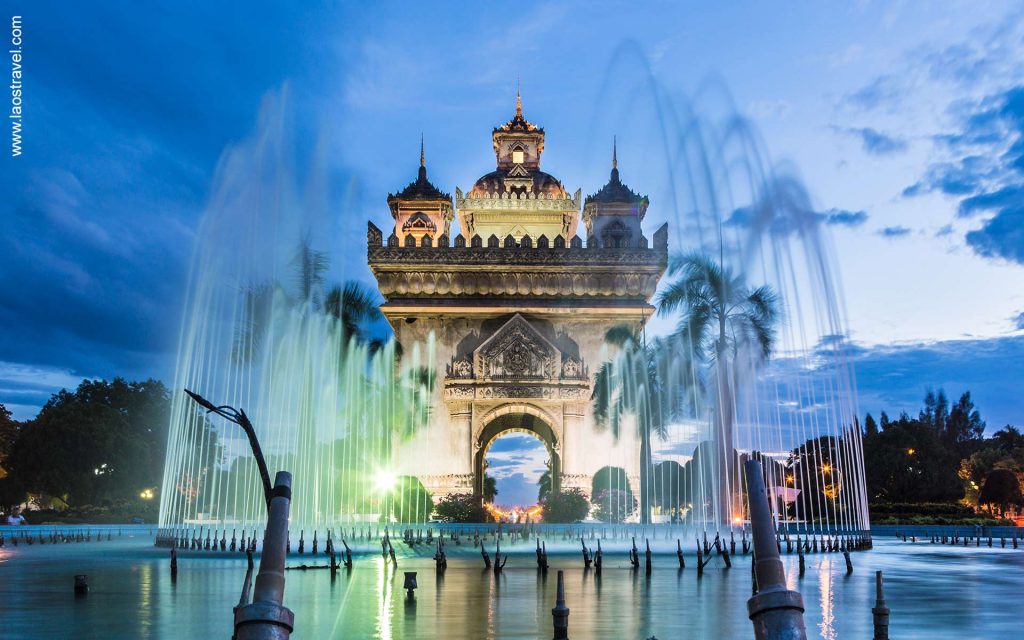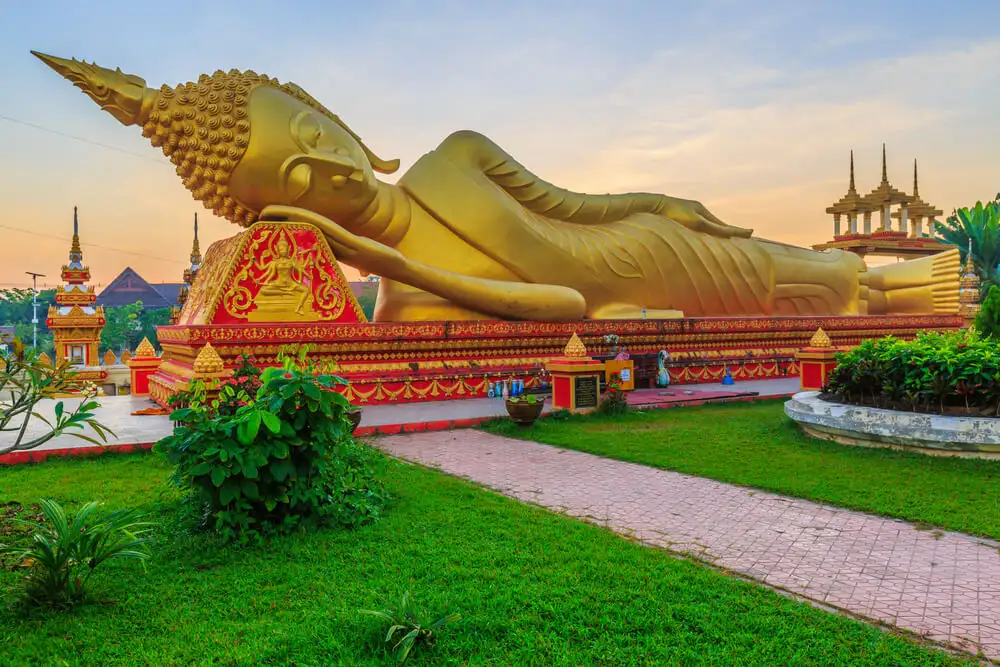By Tanya Maswaure
Laos: the land of acres of unexplored of a million elephants and ed land! The Hidden Gem of Asia As part of Amazons Watch Magazine’s commitment to our readers, we are always excited to discover and share with you, new resorts that feel like a home away from home. After all the hard work and impact you have made in this world, it is important that you catch a breath and relax. Therefore, we’ve put together the perfect places to unwind on your next vacation- all in one country: Laos!
The South Asian Country is ready with open arms to welcome you on your next adventure. Join us as we walk through the history, the highlights, and one of the most famous recipes of Laos. Places to visit Present-day Laos traces its historic and cultural identity to Lan Xang, which existed from the 14th century to the 18th century as one of the largest kingdoms in Southeast Asia.
Since it is the central geographical location in Southeast Asia, the kingdom became a hub for overland trade and as a result, became wealthy economically and culturally. Laos is the perfect place to explore and experience Asian culture. Since the climate is tropical throughout the year, you can visit Laos anytime. However, if you prefer to cruise on the Mekong River, it is better to travel between November and January when the water levels are higher.
Laos has an array of places you can schedule in your itinerary to visit. Luang Prabang is a perfect example. At the centre of Luang Prabang is a hill that offers stunning views of the Mekong River. Luang Prabang offers beautiful sights such as temples, palace museums, souvenir shops, and multi-cuisine restaurants. Travellers can explore the city on a rented bicycle. You will also notice that many restaurants are built inside French colonial buildings. Some museums display the fascinating cultures of Northern Laos. Night markets are also quite popular and a great place to enjoy sticky rice, one of our unique feature recipes. Vang Vieng is another spectacular site that serves as Laos’s party hub. There are lots of adventure activities such as mountain climbing and tubing. Though it is small, this place offers the most active vacation. The blue lagoon, Tham Phu Kham (cave of golden crabs), and the Silver Lake are must-visits.
History and Female Politics
Laotian women have long been active participants in Laotian society; they have been involved in politics, driving social transformation and development, engaged in business, and serving as nurses and food producers for the military. However, due to modernization and rural uprooting, pooppooò women have also begun to embrace lifestyles that are foreign to traditional Laotian ideals.
The Lao Women’s Union (LWU; Lao: ) is a women’s rights organization established in Laos on July 20, 1955. It was initially called the Lao Patriotic Women’s Association but was renamed the Lao Women’s Association in 1965 and got its present name at the 1st National Congress in 1984. It has acted as the official leader of the women’s movement in Laos since its founding. It is responsible for promoting government policies that benefit women and protecting women’s rights within the government while liberating them from traditional norms within society and involving them in social revolution to promote their overall status and welfare in Laotian society.
People in Laos celebrate the Women’s Union Establishment Day annually on July 20. It is one of the country’s most important official national holidays, and in recent times, it has gained more significance in the growing international movement for equal rights for women. The story behind this holiday, and why it’s so widely celebrated in Laos, is one of the long struggles that eventually granted women their rights and promoted more favourable policies for women. In Laos, the Women’s Union Establishment Day national holiday is a symbol of the plight of women and how it can change for the better. In 1997, Onechanh Thammavong became one of the vice presidents of the National Assembly of Laos. In March 2011, the National Assembly provided a seminar for forty-seven female candidates in advance of the 7th Lao general elections in April 2011 to instill the “significant duties of the national legislature body” in women.
Onechanh Thammavong (Lao: ; born May 13, 1953) is a Laotian politician and member of the Lao People’s Revolutionary Party (LPRP). She served as the Minister of Labour and Social Welfare in the 6th Government of Laos. She is a former president of resident of the Lao Women’s Union, succeeding Khampheng Boupha in 1988. The Lao Women’s Union held its first national congress in 1984. This was a significant moment in the Union’s history, as it helped unify its efforts and saw devising the principal plans for the Union’s future projects. The Union holds a national congress every five to seven years. The Lao Women’s Union has a membership of over one million, making it one of the country’s most vital social and political organizations.
Cuisine
Lao people were originally migrants from Southern China, composed of many ethnic groups with distinct languages and cultures.
As they moved further South, they brought their traditions along with them. Due to historical Lao migration from the Lao PDR into Thailand and neighbouring countries, Lao cuisine has a much broader recognition globally. Therefore, the best way to try Lao food is by exploring the diversity of cuisines within Laos’s borders. In Laos, food is the most important activity throughout the day. In the local language, it is quite common for people to greet each other by immediately asking, “Have you eaten food?” (“Kin khao laeo bor?”). Lao people take a great passion for sharing traditional dishes with curious travellers; sticky rice is a staple throughout the country. It is a popular saying that Lao citizens eat more sticky rice than anyone else. It is traditionally steamed in a coneshaped bamboo basket and placed in a covered basket where it is eaten alongside many dishes. In Laos, sticky rice should always be available to eat at any time of the day.
Larb is a complimentary dish for sticky rice. This dish is a type of minced meat salad and is widely considered to be the national dish of Laos. You can find Larb made with chicken, beef, duck, fish, or pork. It is usually flavoured with fish sauce, lime juice, fermented fish juice, ground rice, and fresh herbs. It comes with a few chili peppers, which you can avoid eating if you cannot handle spicy food. (See the recipe below)
Delicious Baguettes (a long, thin type of bread of French origin) are also commonly found on many streets in Laos. This baguette sandwiches largely resemble a Vietnamese Banh Mi, but instead of using cilantro and pickles, the Lao version consists of watercress, grated carrots, and a good amount of chilegarlic sauce. It is a quick meal that you can enjoy on the go for breakfast or lunch. Laos Star Recipe: Chicken Larb Sometimes traveling can be expensive, but we have the next best option! With this staple Laos recipe, you can easily transport your taste buds to the magnificent views and buzzing streets.
This is our favourite: Ingredients
- 1 pound of ground chicken
- ½ cup of cooked chicken skin, sliced (found at Asian markets)
- 1 tablespoon of cooking oil
- cup shallots (sliced)
- ¼ cup cilantro (roughly chopped)
- ¼ cup mint (roughly chopped)
- 2 spring onions (sliced)
- 2 Thai chilies (finely sliced)
- white pepper
- cup roasted peanuts (unsalted, chopped roughly)
- 1 lime, juiced
- 2 inches. pieces of lemon grass
- 2 cloves garlic, minced
- 1 tablespoon of crushed dried chilli
- 1 romaine lettuce (optional)
Recipe
Step 1 – Get ready for the scallions, cilantro, spearmint, chilis, lemongrass, and chilis. First, ensure that you have minced the scallions, cilantro, spearmint, and garlic.
Step 2 – Add the chicken to a pan along with about ½ cup of water. Spread the chicken evenly across the pan. Turn on the heat to medium and bring to a simmer without stirring. Let it simmer for 1 minute before carefully flipping over the ground chicken. Gently break it into small chunks. You’re looking for it to clump together and not turn into mush. Break up any large clumps with the back of a wooden spoon. After about 5 minutes, when you can see no pink from the chicken, remove from the heat and leave to cool completely.
Step 3 – Once cooled, drain the excess water from the chicken. Tip the chicken into a bowl. Stir in the shallots, cilantro, mint, spring onions, chilies, kaffir lime leaf, and white pepper. Pour in the dressing and stir well. Next, add in the padaek (fermented fish sauce).
Decant to a serving bowl or platter and scatter generously with the chopped peanuts.
Serve at room temperature with romaine lettuce leaves (optional) to make cups. On the side, serve lime wedges and some fantastic sticky rice.
The fun and adventures in Laos are endless, and we will note this down as one of our favourite travel locations and hope that we have at least convinced you to consider the same. Happy travelling and happy cooking!






Comments are closed.